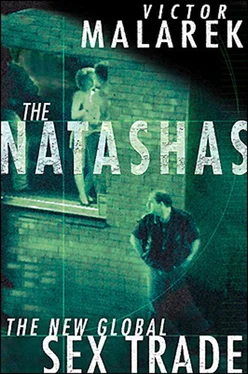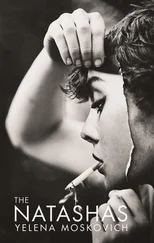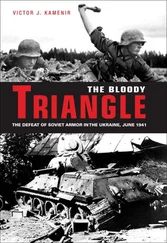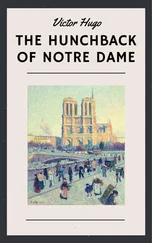During that time Marika tried desperately to find a way to escape, but the windows in the cramped two-bedroom apartment were nailed shut and thick-necked Avi was always on guard.
I pleaded with several clients to help me—the ones who looked sympathetic. I asked to use their cell phone to call my mother, just to tell her I was alive. They all refused, even the religious ones. All they did was complain to Avi if I did not perform to their satisfaction. For that, I received a slap in the face, a fine added to the money I owed for the trip to Israel and nothing to eat for a day.
So often I thought of killing myself, and then I thought of my poor mother and my sisters. I prayed every day that today I will be rescued. But the days just passed and passed.
While servicing the steady stream of clients, Marika found one thing particularly puzzling. Most didn’t distinguish between the girls’ ethnic backgrounds. It didn’t matter whether they were from Russia, Moldova, Romania or Ukraine. In the eyes of the men, they were all Russian. Even stranger was the way many of the men addressed them. “They called us Natasha. They never asked our real name. To them, we were all Natashas.
“We were their sexual fantasy. These fools would walk into the parlor and with a stupid grin on their face call out ‘Natasha!’ like we were some kind of Russian doll. And we were expected to smile and rush over to them.” Marika remembered the first time she was called by that name.
This fat, sweaty pig is reaching his climax and he begins to murmur, “Oh, Natasha! Natasha!” At first I thought it strange being called by another name. But very soon I came to accept it as my escape. When I was alone in my thoughts and my dreams, I was Marika—free from this prison. But when I went with a man, I became this other woman—this prostitute called Natasha who was cold and dead inside me.
Natasha was my nightmare. Marika was my salvation. I never told any of these men my real name.
And they never asked.
INTRODUCTION:
THE FOURTH WAVE
WITH THE BREAKUP of the Soviet Union in 1991 democracy swept over the republics of this once oppressive Communist empire. It was a time of immense change and upheaval, yet the majority of the populace seemed up for the challenge. For many, it was the realization of a lifelong dream. They were free, once and for all, to live as individual nations. They could speak their own language, practice their own faiths and, most important, govern themselves.
Then reality marched in. For much of the population the dreams of a better way of life evaporated overnight. The move toward market reforms that was to shepherd these countries into the fold of the global economy saw a massive flight of capital instead. Law and order were compromised by corruption, greed and graft. In no time, the economies of the new republics collapsed and the social safety nets that had provided a minimum standard of living for the bulk of the population were torn to shreds. Security and equality became relics of the past. Democracy had become a bitter sham.
In the chaos that followed, tens of millions of people were abandoned, left to survive as best as they could. Who could they turn to? Certainly not the government. The ruling class had emerged as the moneyed class. While families worried about their next meal, politicians and top-level bureaucrats lined their pockets until they were bursting at the seams. For them, Mercedes and cell phones became a way of life, their only concerns “how many?” and “which ones?” With those at the nations’ helms usurping power and accumulating previously unheard-of wealth, the traditional mistrust of authority, entrenched over decades of Soviet rule, bred widespread disillusionment. The population had to fend for itself.
It didn’t take long before the loss of control and the newly porous borders attracted another formidable force. As the once impregnable Iron Curtain disintegrated in shambles, organized crime rushed in… and replaced the Curtain with a cheap plastic zipper. The black market skyrocketed and remains endemic today. It also didn’t take long for the mob to zero in on the fledgling republics’ most valuable assets: beautiful but desperate women and girls—educated, well mannered, with no future in sight.
With the social structure in disarray, families broke down. Children were abandoned in the street. Husbands sought solace in the bottle and alcoholism became an epidemic. Violence against women and children soared. And through it all, the women were left to pick up the pieces. They set out to find work to keep their families together. Even young girls with no families yet of their own went searching for jobs to feed younger siblings and parents. By this time, however, the unemployment rate for women had ballooned to roughly 80 percent. There were simply no jobs to be found. With the stench of desperation in the air, they made perfect targets.
Enter the “saviours,” promising endless varieties of what, for these women, was nothing less than salvation. Jobs as nannies in Greece… domestics in Italy and France… maids in Austria and Spain… models in North America and Japan. In each case, the recruiters painted alluring pictures of well-paying jobs in glamorous lands. For this generation of young women, many of whom grew up nursing romantic fantasies of the West, these were more than just dream jobs. They were a way out. Without giving it much thought they jumped at the chance, only to find themselves trapped in a cycle infinitely worse.
The Natashas have been shipped all over the world. They are the latest “It Girls” in the burgeoning business of sex. They line the streets of the red-light districts in Austria, Italy, Belgium and Holland. They stock the brothels in South Korea, Bosnia and Japan. They work nude in massage parlors in Canada and England. They are locked up as sex slaves in apartments in the United Arab Emirates, Germany, Israel and Greece. They star in peep shows and seedy strip clubs in the United States. To the casual observer, they blend in seamlessly with the women who have chosen to exchange money for sex. In their cheap makeup, sleazy outfits and stiletto heels, they walk the same walk and talk the same talk. They smile, they wink, they pose and they strut, but they do it because they know what will happen if they don’t.
Day in, day out, the Natashas are forced to service anywhere from ten to thirty men a night. The money they make goes to their “owners.” They live in appalling conditions, suffering frequent beatings and threats. Those who resist are severely punished. Those who refuse are sometimes maimed or killed.
Most people have no idea that these women even exist. Except for the street trade, they are largely invisible, held behind locked doors in apartments, brothels, massage parlors and bars. To their clients, they are nothing more than an interchangeable body. It doesn’t matter that they’re enslaved; sex for money is a business transaction. To their owners and pimps, they’re perishable goods to be used to the fullest before they spoil. And to the gangs who traffic in these women and girls, they are one of the most profitable forms of business in existence today. Trafficking in human beings is now the third-largest moneymaking venture in the world, after illegal weapons and drugs. In fact, the United Nations estimates that the trade nets organized crime more than $12 billion a year. [1] All dollar amounts in this book are in U.S. currency.
At a roadside coffee bar outside Rome, an Albanian pimp boasted, “I paid $2500 for her. I made my investment back in a few days.” According to the international police organization Interpol, a trafficked woman can bring in anywhere from $75,000 to $250,000 a year. From a profit-making perspective, it’s the perfect business. Returns are incredible. The goods are plentiful and cheap. And once a woman is spent or no longer in demand, she’s discarded and replaced by a younger, fresher face.
Читать дальше












